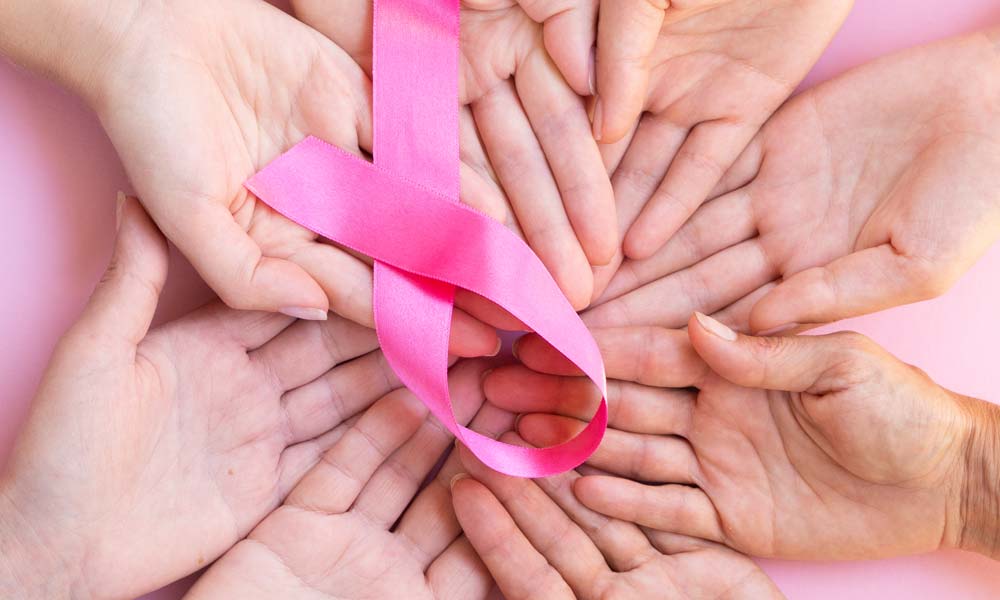Pese a casi entrar en el año 2021 existen muchas mujeres que no conocen la infinidad de enfermedades que pueden afectar sus senos, mismas que no necesariamente pueden desencadenar un cáncer.
Para conocer de dichas enfermedades, Visionarias platicó con el doctor Genaro Tamayo Pérez, especialista en patología de las glándulas mamarias y director de la Clínica de Patología Mamaria SenX, quien nos ayuda a comprender la estructura de esta parte del cuerpo, así como los tipos de padecimientos que pueden afectarla.
Sobre las mamas, el especialista nos explica que estas tienen una “estructura extraordinaria”, lo que no impide que lleguen a sufrir diferentes tipos de enfermedades, las cuales se pueden dividir en congénitas, es decir desde el nacimiento, como por ejemplo cuando las mujeres nacen sin la estructura o sólo con una parte de esta.
También están las enfermedades que llegan a aparecer durante el desarrollo (como la falta de desarrollo, que se desarrollen mucho o que una mama crezca más que la otra). Además, existe la posibilidad de la presencia de tejido mamario fuera del lugar habitual (para los humanos), así como lesiones benignas, las cuales, según explica el doctor Tamayo son más que las malignas.
El médico agrega que cada tipo de enfermedad o lesión tiene variables que generan comportamientos diferentes en las mujeres, lo cual dependerá de su estado de salud, edad, genética y otros detalles que se deben evaluar para determinar que tanto el padecimiento afectará a la mujer o que tratamiento es el que se debe de seguir en cada una de ellas.
¿Cuándo sí preocuparnos?
Cuando la lesión es maligna es importante que se detecte a tiempo, ya que esto permitirá una mejor atención y se asegurará el bienestar de la paciente.
Las lesiones malignas se dividen en linfoma, sarcoma y el carcinoma; de este último hay dos variedades, el In-situ y el invasor, donde el invasor tiene más de 27 tipos, entre ellos el ductal, el cual es el más común.
“En la actualidad las mujeres se sienten algo, o les duele algo o les dicen que tal vez hay algo y automáticamente lo asocian con el cáncer y con la muerte, lo cual es totalmente falso, si bien algunas de ellas pueden fallecer por la enfermedad, esto está dado más por la etapa (tardía) en la cual se detectó el padecimiento, algunas características de la lesión y la presencia de otras comorbilidades”, menciona el doctor Tamayo.
Por lo anterior, es importante la detección temprana de las lesiones mamarias, para evitar que se llegue a un cáncer avanzado.
No todo es verdad en Internet
El especialista señala que buscar los padecimientos en Internet resulta confuso para las mujeres, ya que es un lugar donde no toda la información es verídica y frecuentemente es contradictoria, incorrecta o imprecisa, y aunque en algunos casos sea correcta, el manejo siempre se debe individualizar, pues cada persona es diferente, desde su genética hasta sus hábitos y esto puede variar el tratamiento.
¿Cómo prevenirlo?
“El grupo más grande de sobrevivientes de cáncer en el mundo es el de sobrevivientes de cáncer de mama”, confirma Tamayo, quien comparte que una de las campañas más constantes en el tema es la de la autoexploración, acción que no muchas mujeres realizan, pues no es un hábito en ellas.
Ante esto el especialista señaló que la mejor manera de enseñar la práctica de la autoexploración es inculcarlo desde niñas y hace énfasis en que las pequeñas lo aprenden casi jugando, por lo que deben saber cómo hacerlo correctamente, es decir con las yemas de los dedos en forma circular y con el brazo detrás de la cabeza, ya que de esta forma cualquier “bolita” será fácil de detectar.
“Si desde niñas se les fomenta el hábito de la autoexploración y se les enseña a que no todo es cáncer, esto ayudará a que ellas vean la autoexploración como algo normal y no les va a dar miedo de ir al médico, con esta pequeña enseñanza podremos bajar aún más la tasa de mortalidad por el cáncer de mama”.
Y ya arriba de 40 años perder el miedo a realizarse el estudio de la mamografía que sigue siendo el método más aceptado de vigilancia y detección temprana.
En conclusión, se puede decir que hablar de cáncer de mama no está mal, pero es necesario hacerlo con conciencia y proactivamente, generando un análisis racional, ya que la gran mayoría de las lesiones no son cáncer y la confianza de que aun si es un cáncer es una enfermedad se puede superar. Así que a cuidarnos y recordar que: No todo es cáncer.

Contacto o citas:
Dr. Genaro Tamayo Pérez
656-611-15-08
656-227-19-85
01-800-606-04-04 Ext. 4800
genarotamayofacs@hotmail.com
Not everything is cancer!
Despite we are almost entering the year 2021, there are many women who don’t know the kinds of diseases that can affect their breasts, which may not necessarily trigger cancer.
To learn about these diseases, Visionarias spoke with Dr. Genaro Tamayo Pérez, specialist in pathology of the mammary glands and director of the SenX Breast Pathology Clinic, who helps us understand the structure of this part of the body, as well the types of conditions that can affect it.
Regarding the breasts, the specialist explains that they have an “extraordinary structure”, which doesn’t prevent them from suffering different types of diseases, which can be divided into congenital, that is, from birth, such as when women are born without the structure or only with a part of it.
There are also diseases that appear during development (such as lack of development, developing a lot or one breast growing more than the other). In addition, there is the possibility of the presence of breast tissue outside the usual place (for humans), as well as benign lesions, which, according to Dr. Tamayo, are more than malignant.
The doctor adds that each type of disease or injury has variables that generate different behaviors in women, which will depend on their health, age, genetics and other details that must be evaluated to determine how much the disease will affect the woman or what treatment should be followed in each of them.
When should we worry?
When the lesion is malignant, early detection it’s important, as this will allow better care and ensure the patient’s well-being.
Malignant lesions are divided into lymphoma, sarcoma, and carcinoma; There are two varieties of the carcinoma, the In-situ and the invasive, which has more than 27 types, including the ductal, which is the most common.
“Nowadays women feel something, or it hurts something, or somebody tells them that maybe there’s something, they automatically associate it with cancer and death, which is totally false. Although some of them may die from the disease, this happens by the (late) stage in which the condition was detected, some characteristics of the injury, and the presence of other comorbidities”, says Dr. Tamayo.
Therefore, early detection of breast lesions is important to prevent advanced cancer from developing.
Not everything on the Internet is true
The specialist points out that searching for conditions on the Internet is confusing for women, since it’s a place where not all the information is true and is frequently contradictory, incorrect or imprecise, and although in some cases it’s correct, the management must always be individualized , because each person is different, from their genetics to their habits, and this can vary the treatment.
How to prevent it?
“The largest group of cancer survivors in the world is breast cancer survivors”, confirms Tamayo, who shares that one of the most constant campaigns on the subject is the self-examination, an action that not many women carry out. It’s not a habit in them.
Given this, the specialist pointed out that the best way to teach the practice of self-exploration is to instill it from girls and emphasizes that little girls learn it almost by playing, so they must know how to do it correctly, that is, with the fingertips in circular shape and with the arm behind the head, because in this way any “ball” will be easy to detect.
“If the habit of self-examination is encouraged and girls are taught that not everything is cancer, this will help them to see self-examination as something normal and they will not be afraid of going to the doctor, with this little lesson we can lower the mortality rate from breast cancer even more ”.
Women over 40 years of age most lose the fear of having a mammography study, which is still the most accepted method of surveillance and early detection.
In conclusion, it can be said that talking about breast cancer is not wrong, but it’s necessary to do it conscientiously and proactively, generating a rational analysis, since the majority of lesions are not cancer and the confidence that even if it’s a cancer is a disease can be overcome. So to take care of ourselves and remember that: Not everything is cancer.
Contact or appointments:
Dr. Genaro Tamayo Pérez
656-611-15-08
656-227-19-85
01-800-606-04-04 Ext. 4800
genarotamayofacs@hotmail.com

